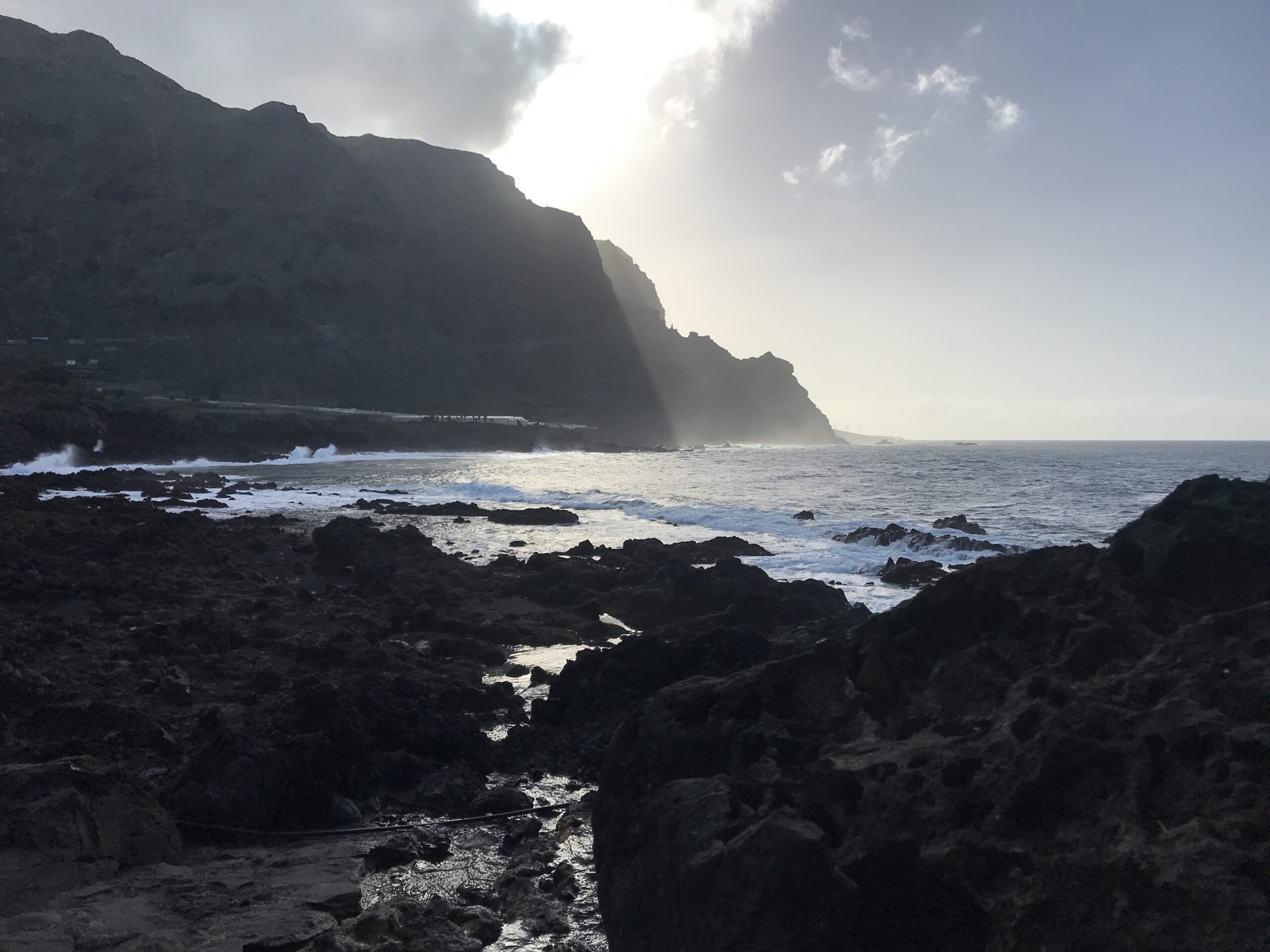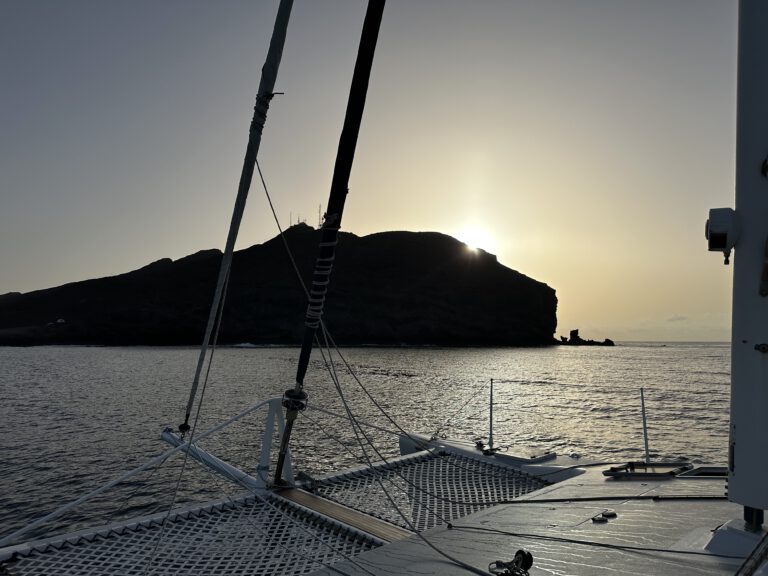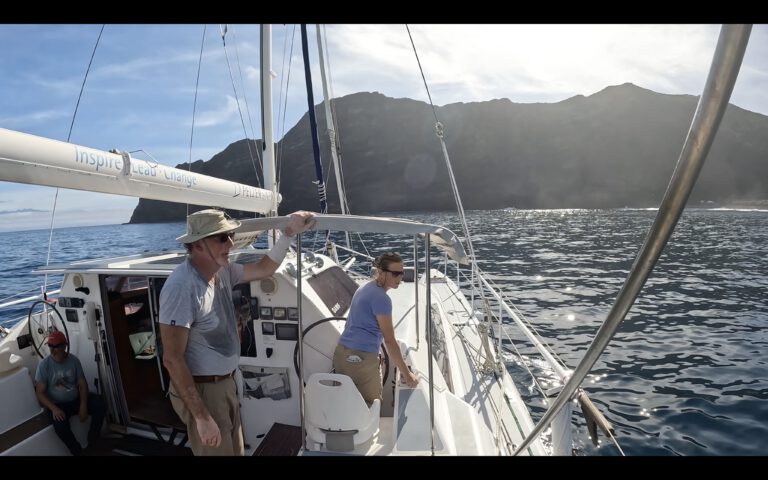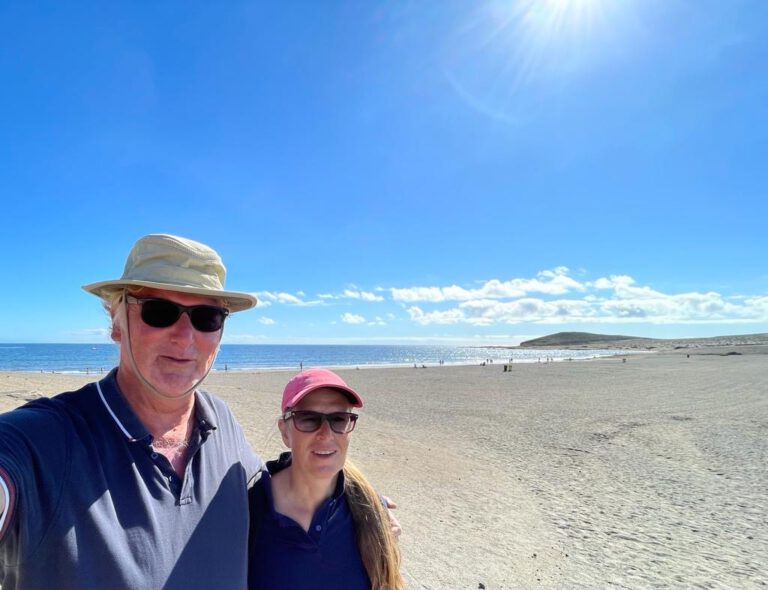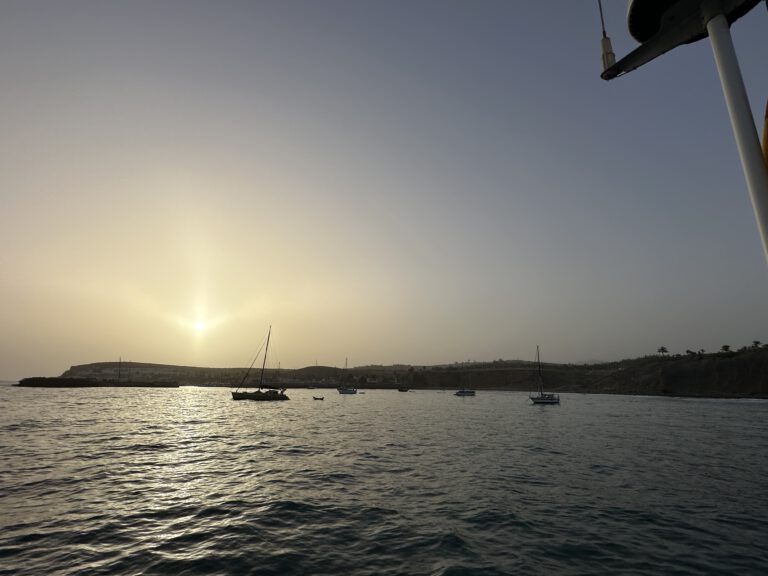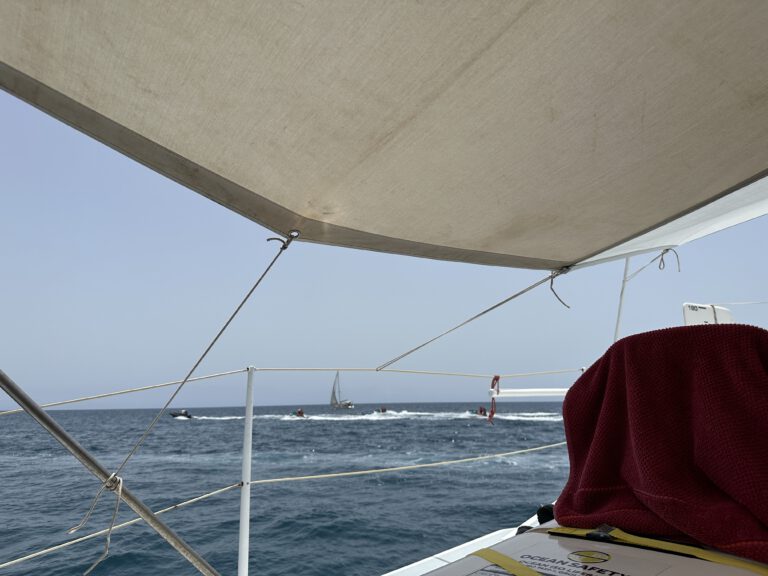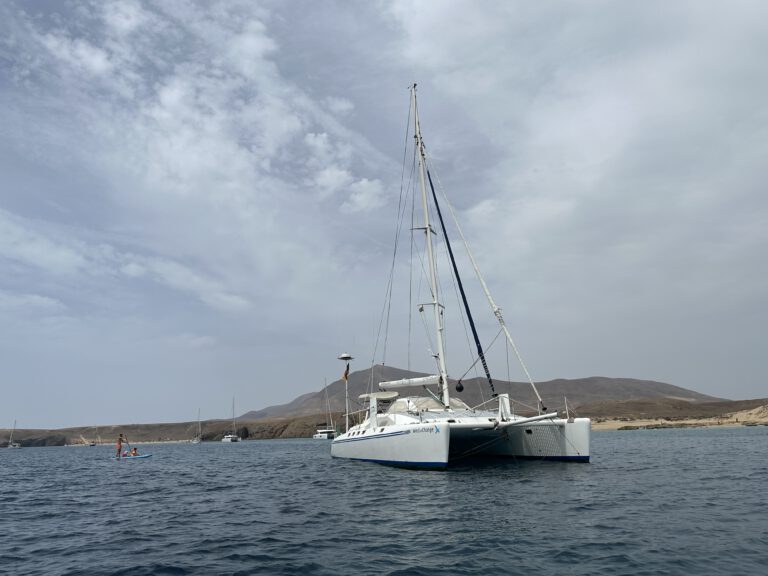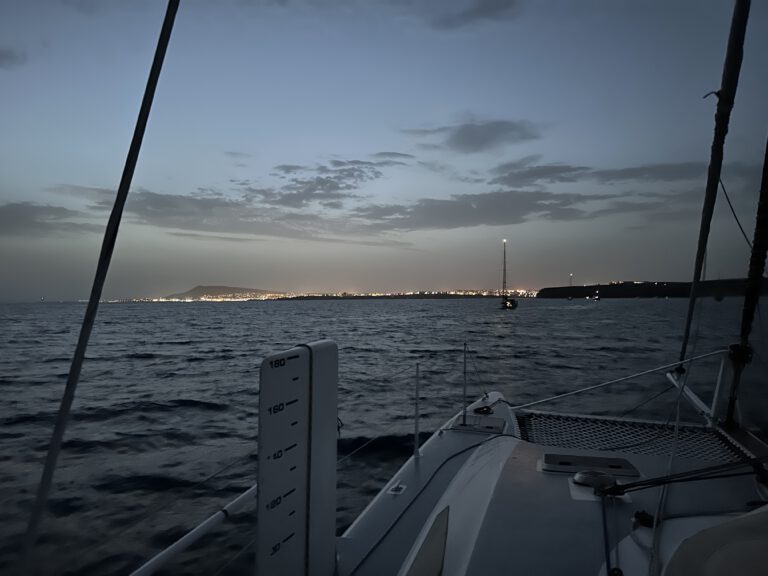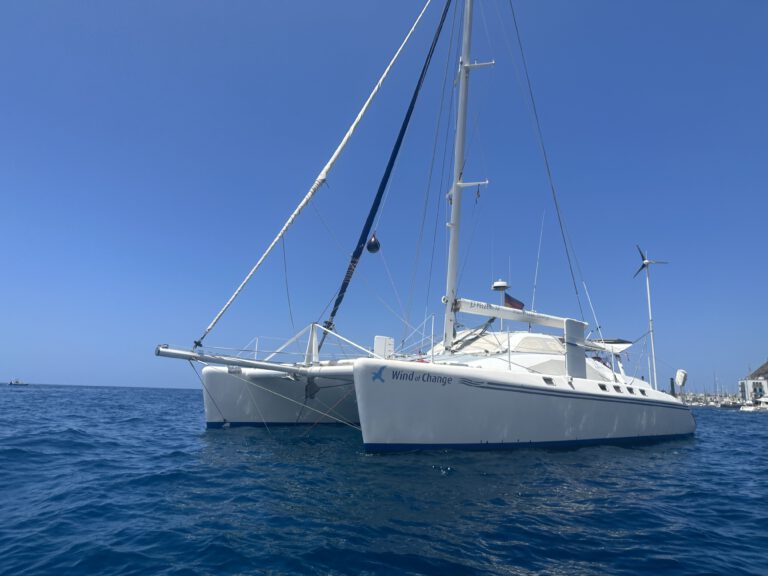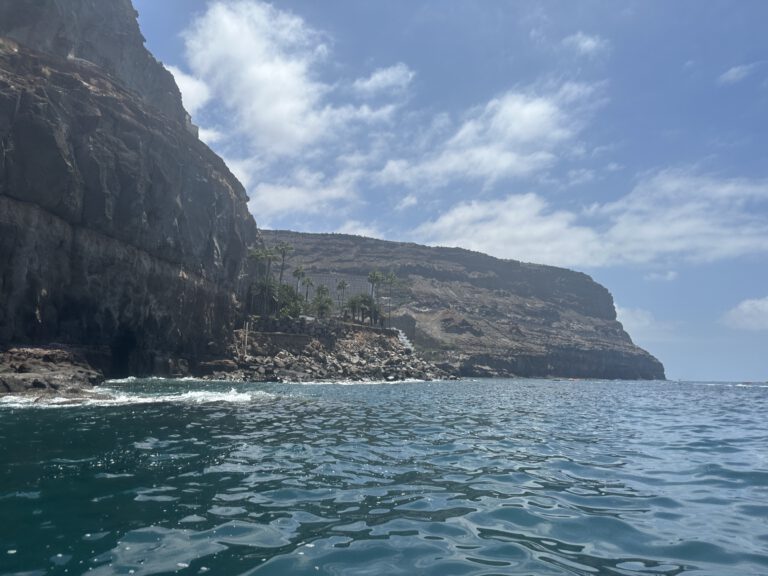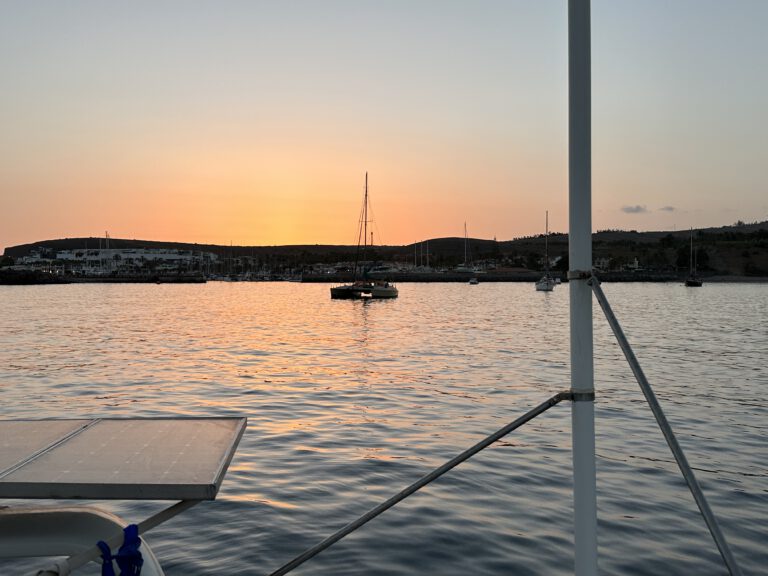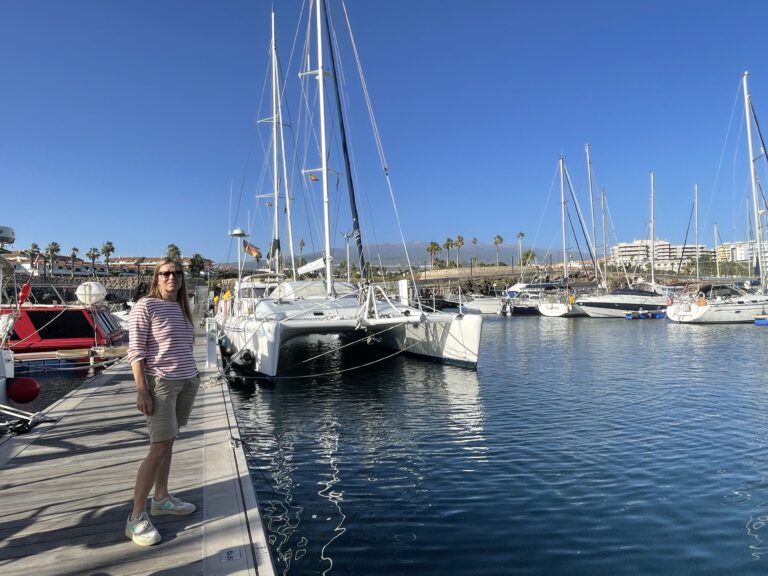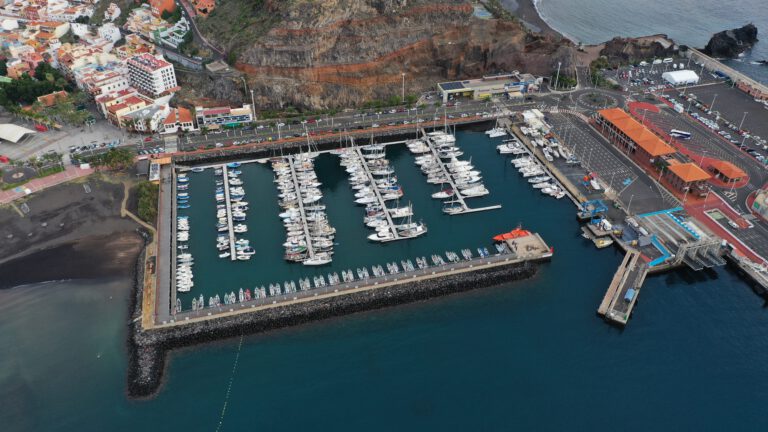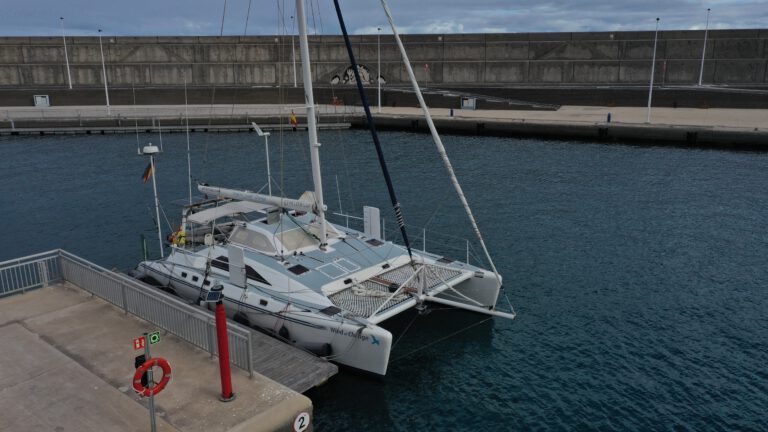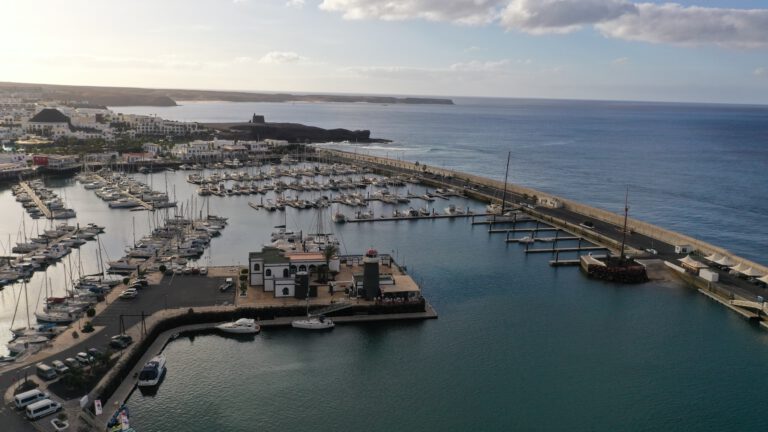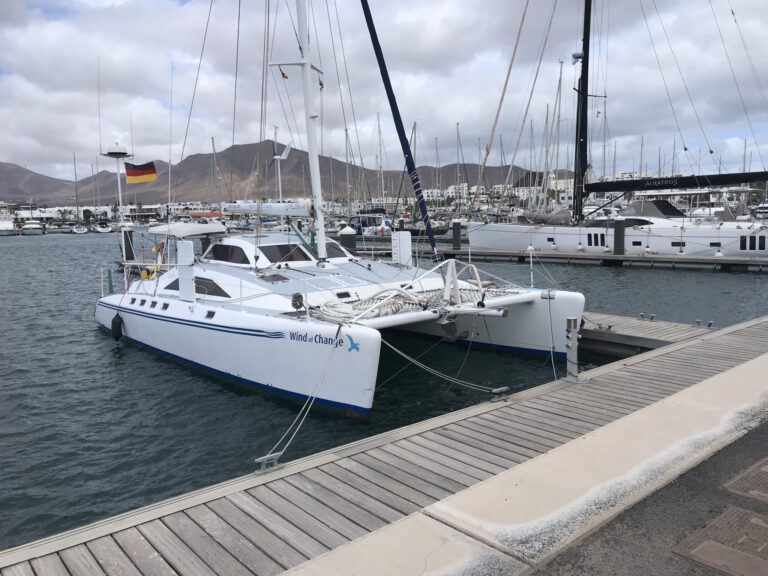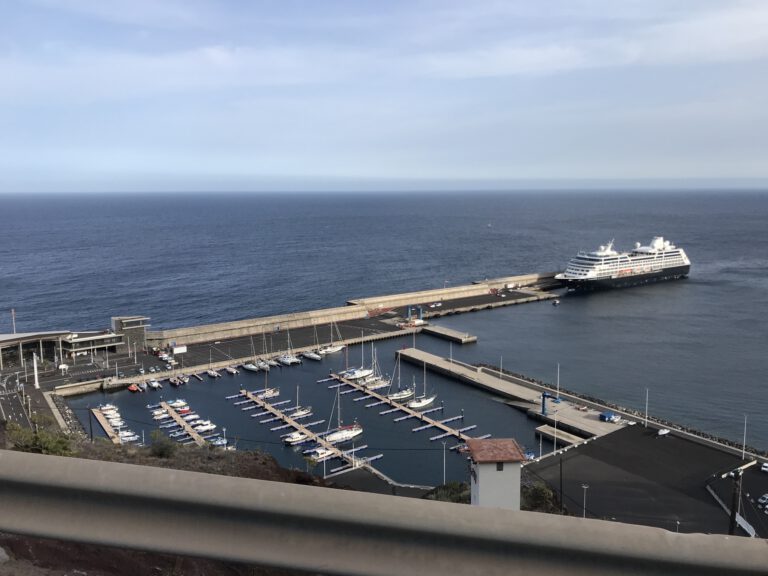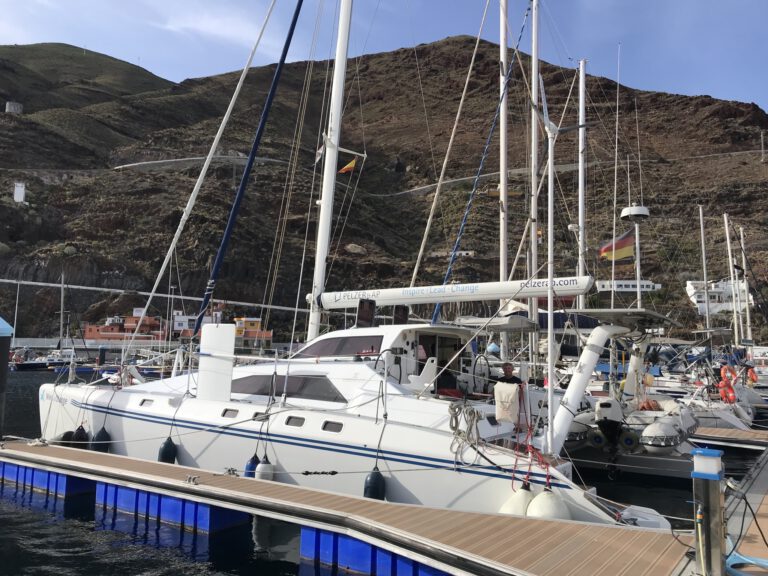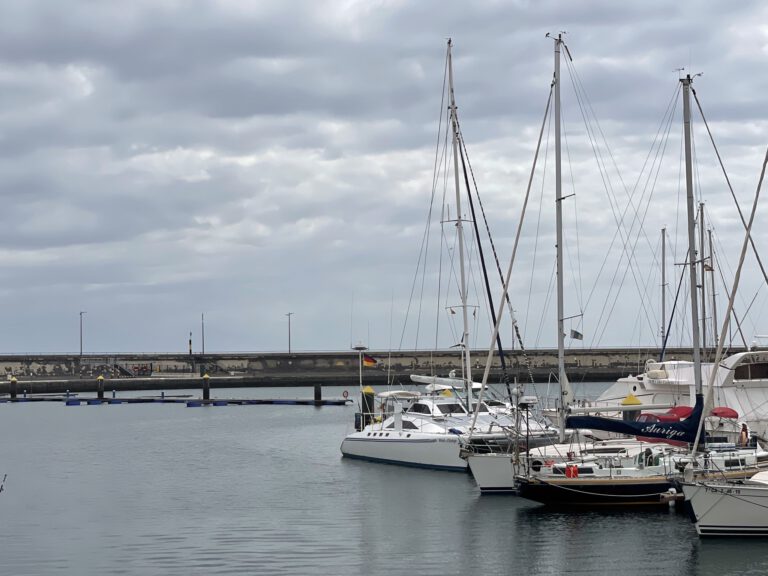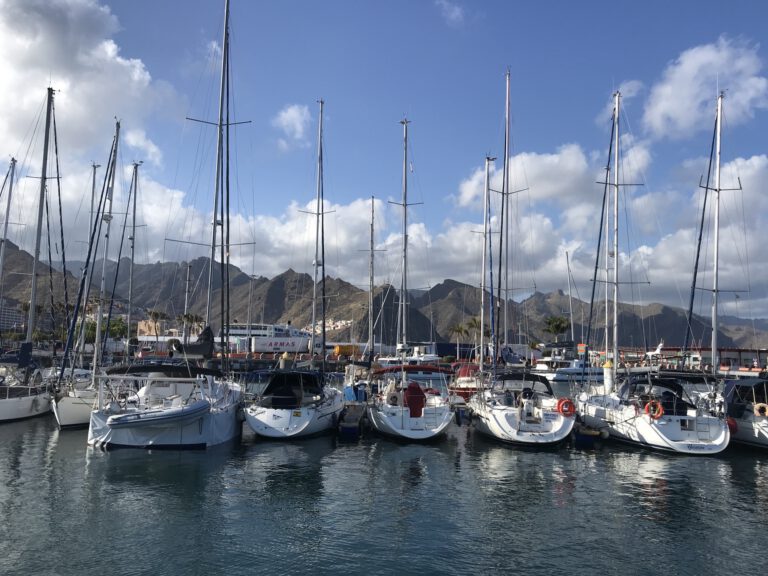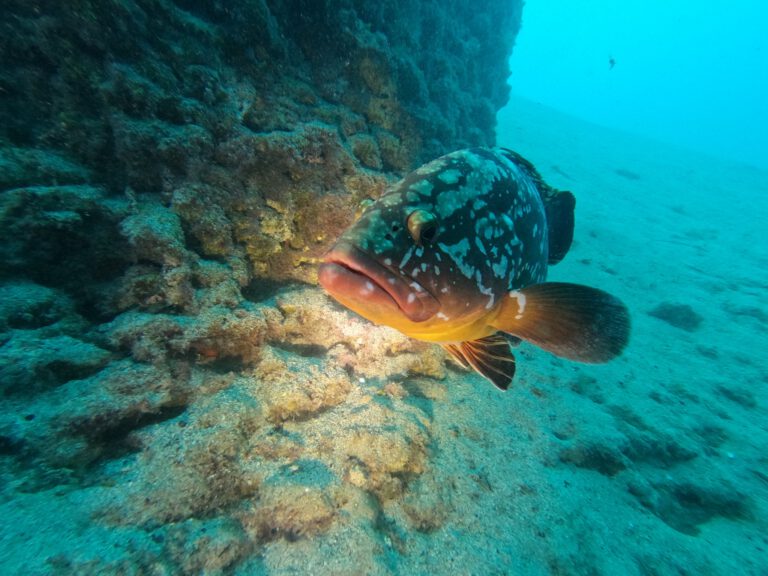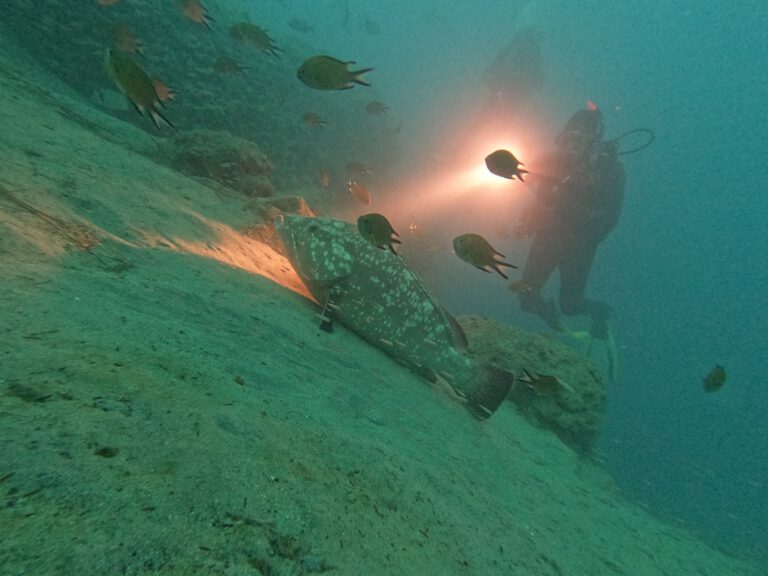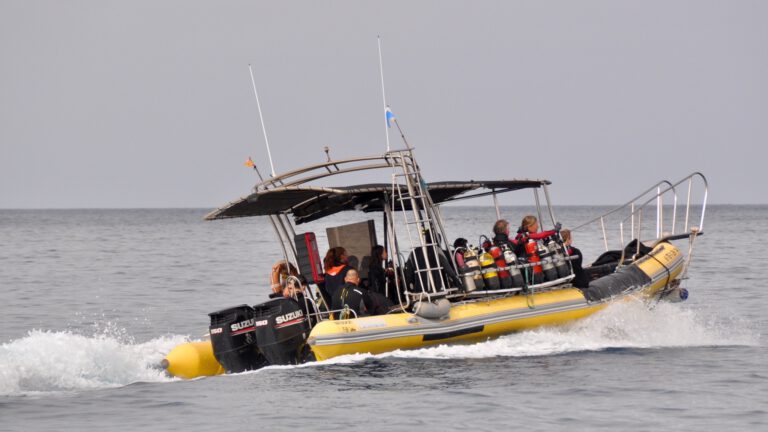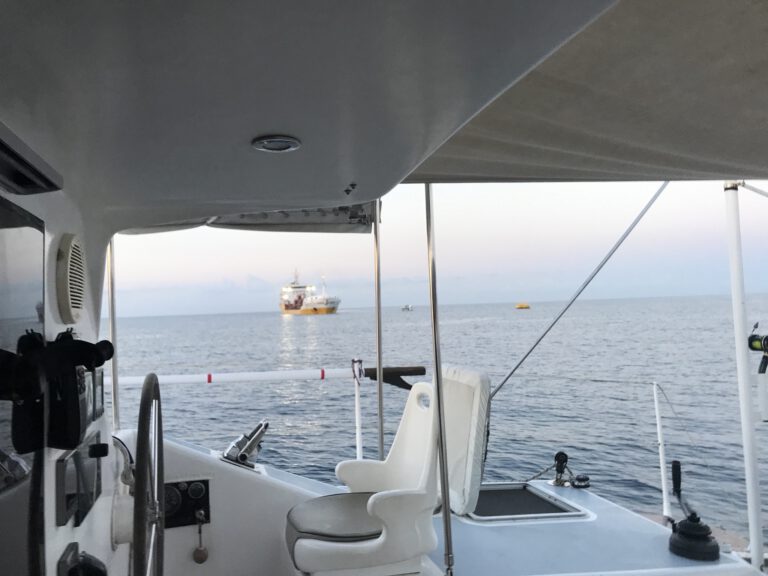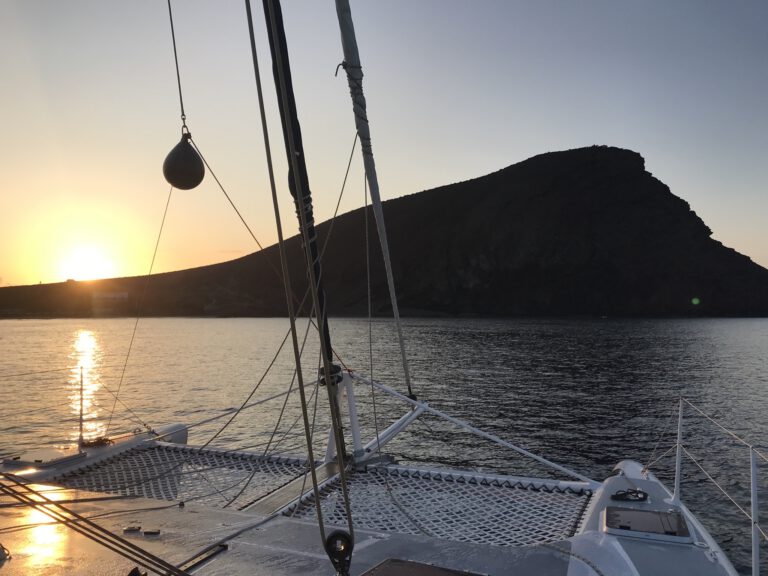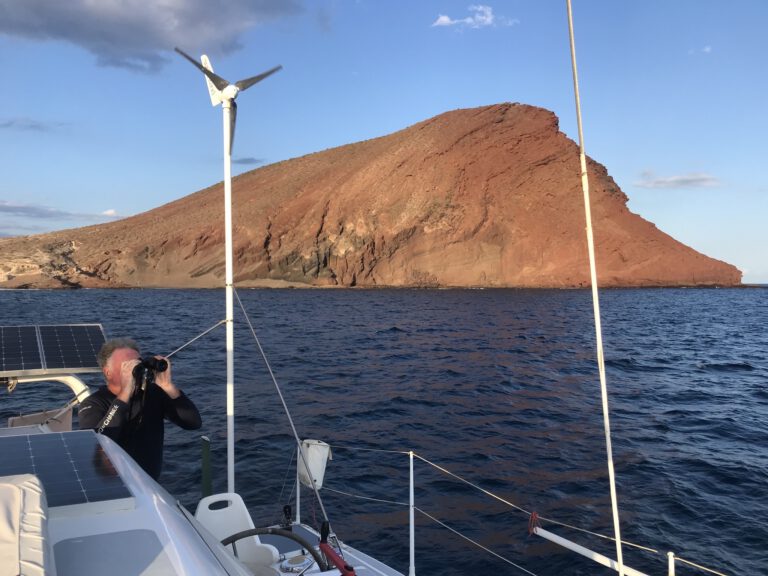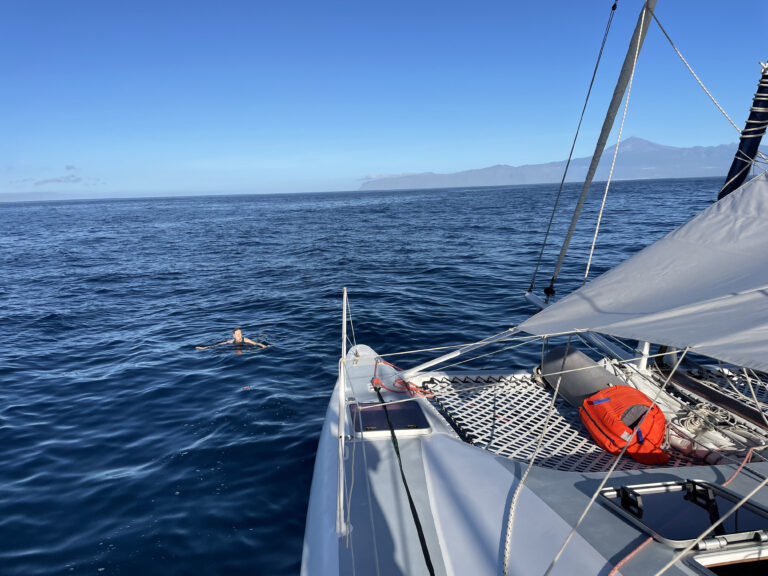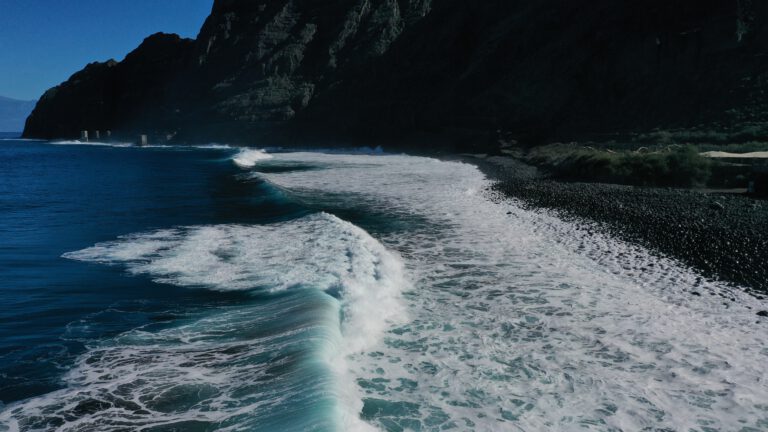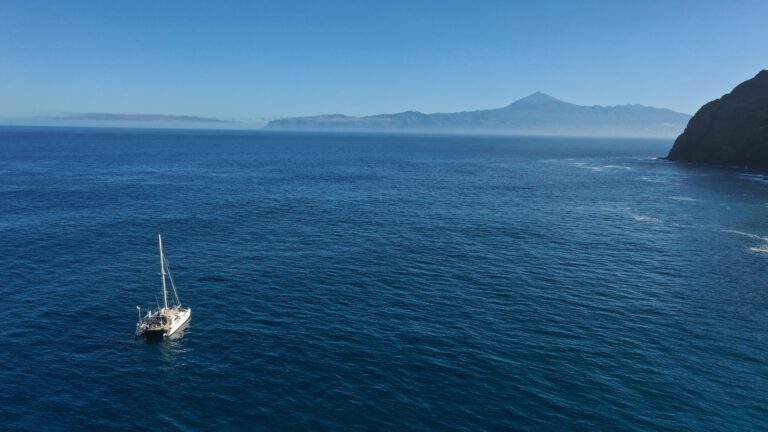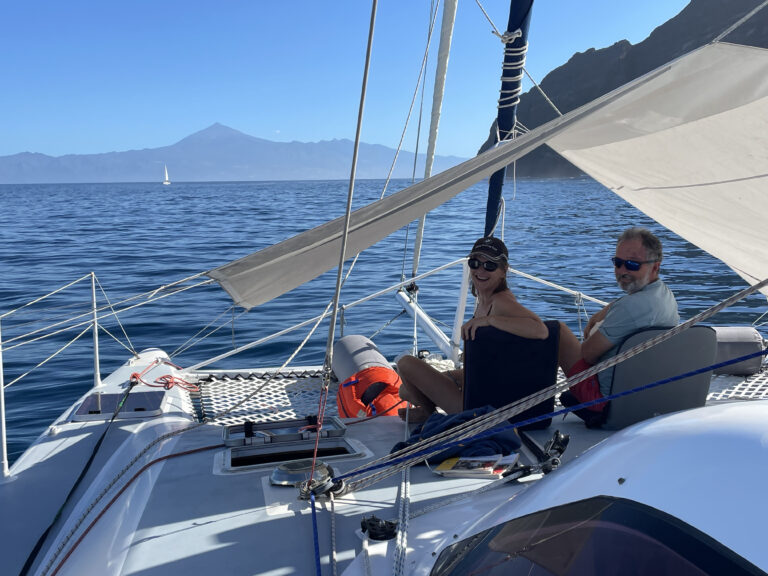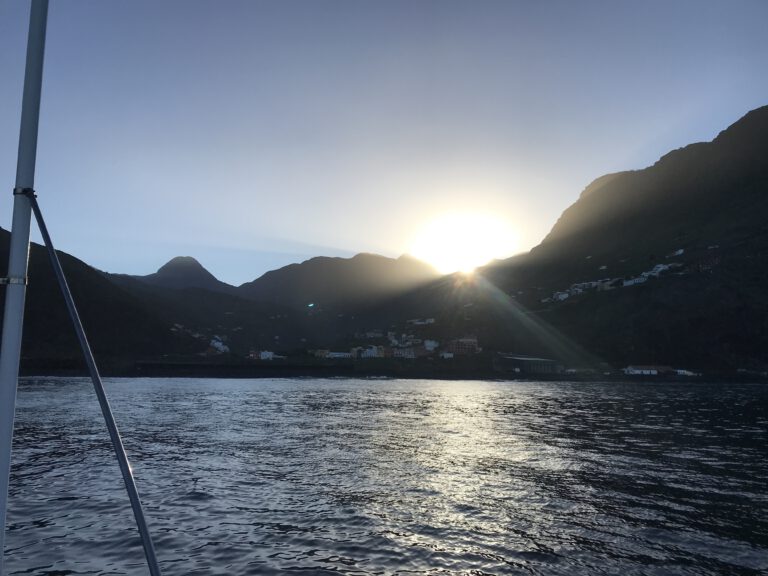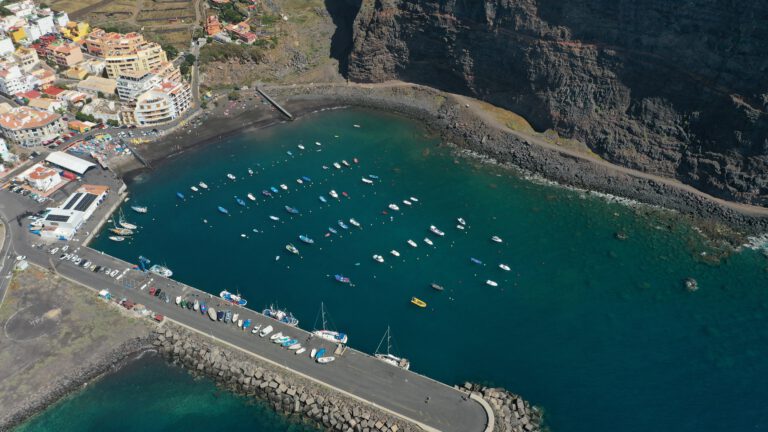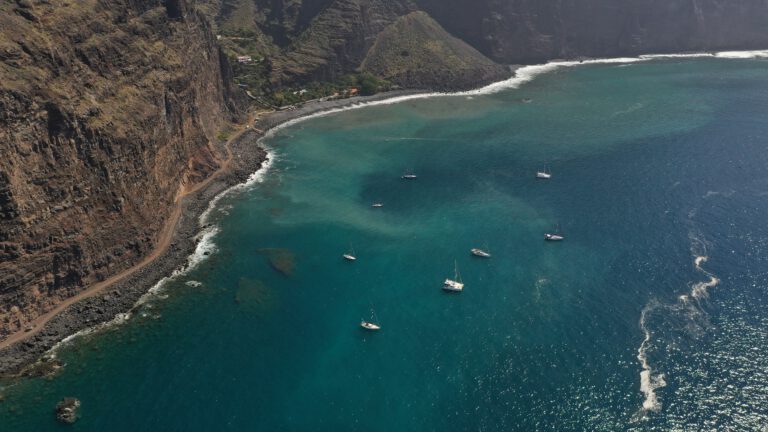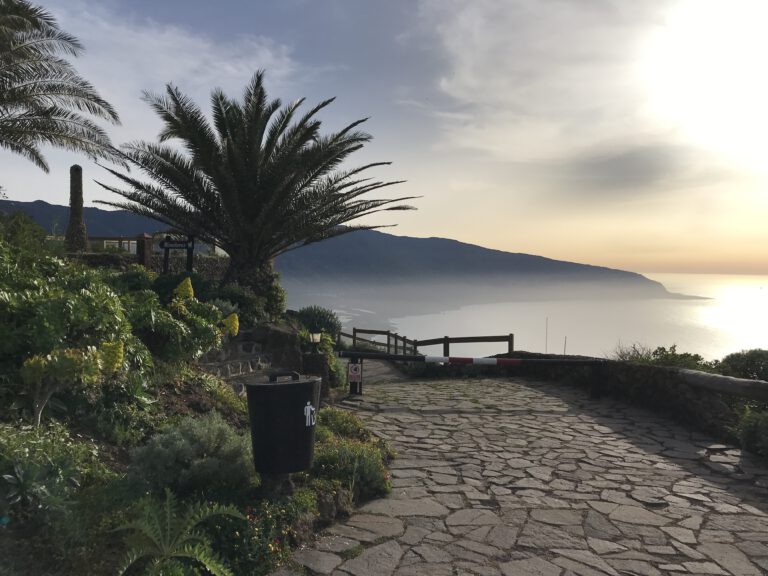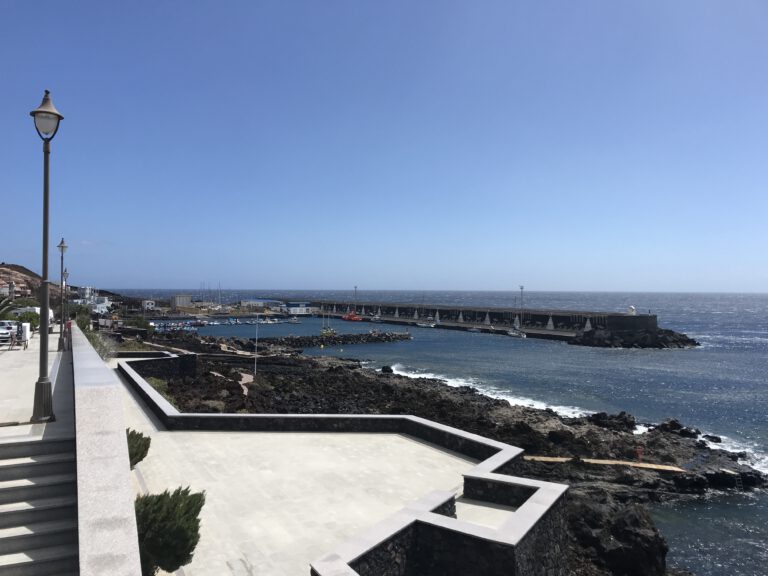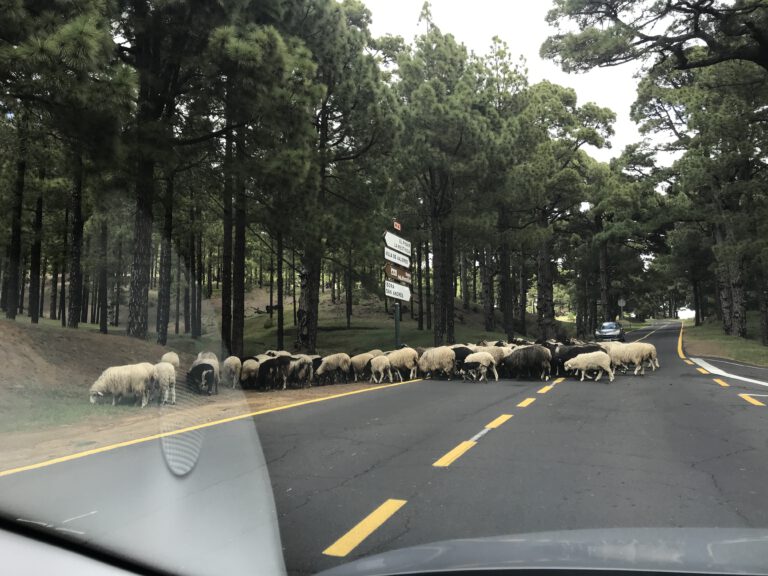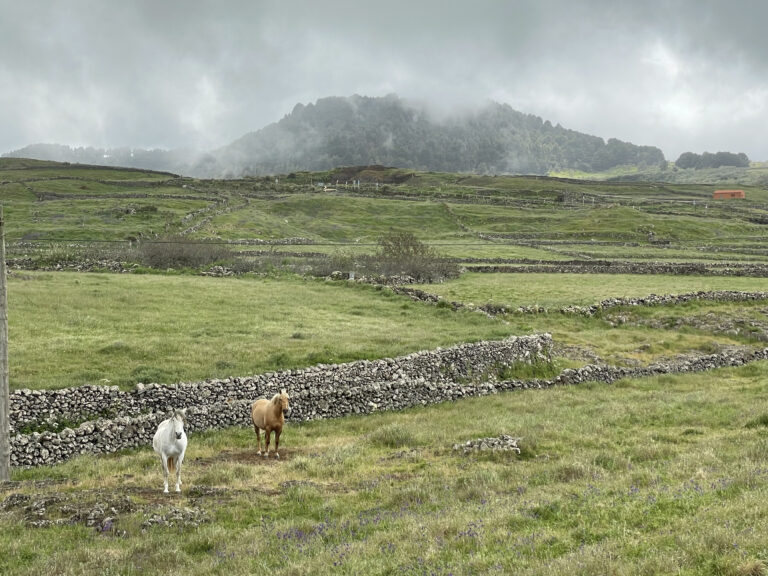You can write whole books about the Canary Islands. We briefly summarise what we as sailors found out about the islands of eternal spring from October 2022 to October 2023 – and how we as strategy consultants used this environment for our clients.
Basics
Several factors make the Canary Islands a wild sailing area and a variant background for strategic issues in the companies we advise:
The Natural Environment
The islands are of volcanic origin and the coasts drop very steeply into the sea.
Business Questions
What do you do when the space is limited to 1% of the possibilities and they need more or want to discover something new?
There are few sheltered anchorages, often rocks and stones under water.
Even if you think you have anchored safely, the environment and weather must be checked regularly – Do you have routines for this in the company?
The wind mostly comes from the north-north-east.
How is the flexibility of your company limited if your economic success only comes from one direction?
The volcanic island shapes often create an unpredictable wind jet and shifting winds as well as local thermals.
Global forecasts do not take sufficient account of local conditions sufficiently. What do you do to avoid getting into threatening situations?
The Atlantic Ocean is 1000m – 2000m deep between the islands, there are strong currents.
As a “shallow water entrepreneur”, how do you deal with Atlantic depths and global currents?
There is little space for guest berths in the harbours, especially for catamarans.
What does it mean for your business if your market seems limited and how do you creatively counter this factor?
There is a lot of wind in summer, often storms in winter, calima (dusty desert winds) are present in all seasons, autumn is the loveliest time.
Opportunities can emerge in stressful and volatile market conditions. Where do you see yours?
Anchoring and anchorages
Offshore island shelves for anchoring with sandy bottoms are more likely to be found on the older, eastern islands such as Lanzarote, Fuerteventura and Gran Canaria. The quality of anchorages decreases sharply towards the west, and it is no longer possible to anchor on El Hierro..
Our criteria for anchoring are not only good anchoring grounds but also the possibility to come ashore with the dinghy. Many beaches are closed to motor vehicles or the surf is too strong to land. Sometimes you can go to a neighbouring harbour to shop and dispose of rubbish.
Ports and marinas
Here are the anchorages and marinas we can recommend:
LANZAROTE
La Graziosa, anchorage Playa Francese: Classic place to arrive on the Canary Islands, good anchorage ground with a few round rocks. We had the anchor stuck when we were trying to lift it, but got it free again easily by moving it back and forth a bit.
In the harbour of La Graziosa (https://puertoscanarios.es/en/project/caleta-del-sebo-port/ ) there is a petrol station from 9am, but the concrete jetty is terrible, so make sure you moor well beforehand! The marineros are unfriendly to the max and don’t help with mooring, which is better…
Anchorage Playa Papagayo: Huge anchorage in front of several beaches (Playa Mujeres, Playa del Pozo, Playa de Cena). Good sandy anchorage with space for all, permanent or day moorers. No nuisance from jet skis or motor boats. Anchored at 8 m with 45 m chain. (Playa der Pzo on sand). Playa Mujeres is a little more protected from wind and swell, but there are only large sand patches between rocks and stones. After two days of snorkelling off the chain, anchoring around and crashing the chain around the rocks in shifting winds, we were fed up 😉
Anchorage East of Punta Aguila: East of Marina Rubicon and west of the Museo Atlantico (anchoring prohibited because of underwater art) in front of Playa Las Coloradas there are one or two small bays with sandy bottoms for a few boats. The anchor holds at 10 m in the sand without rocks, great and very well protected from the wind. Up to 20 knots we lay without swell.
Marina Rubicon with shipyard: Huge beautiful and well-maintained harbour with plenty of space for all kinds of boats and ships, friendly reception, great value for money, perfect marineros help with mooring (The best in the Canaries). Lavanderia accessible with the harbour card for 5 € per machine (hidden behind the pharmacy). Many delicious restaurants, shops and a Sunday craft market. Grocery shopping at the marina or in Playa Blanca, where there are large supermarkets. The small shipyard is nice, but expensive (85€/day!) and they can crane catamarans up to 7.2m wide – next to it is a marine chandler (Acastillaje). https://www.marinarubicon.com/en
For divers we recommend the nice and well equipped diving school Rubicon Diving, (https://www.rubicondiving.com/en) – the diving area on the south coast of Lanzarote is varied, beautiful and suitable for beginners (up to 20m).
FUERTEVERTURA
Anchorage Isla de Lobos: Small and beautiful in fine weather, can get a bit crowded and rough when the wind shifts. To visit the island, book a free half-day pass (10-14h or 14-18h), as only 200 people are allowed in the nature reserve at any one time. https://lobospass.com/authorizations
Anchorage Playa Gran Tarajal: Somewhat rough, yet sheltered anchorage near Gran Tarajal harbour. Good anchorage on sand at 8 m, do not anchor too close to the beach because of surf.
Puerto Gran Tarajal: Simple harbour (Puerto Canarias), but very nice and cheap. (280€ for 10 days in April 2023) Protected harbour with huge walls. Small shipyard and separate fishing port with delicious Cofradia restaurant. In the town of Gran Tarajal there are large supermarkets, nice restaurants and cafés on the beautiful bathing beach and inexpensive self-service lavanderias https://puertoscanarios.es/project/gran-tarajal-de/
Anchorage Morro Jable: At the height of the Lady Chapel on the rocky ridge in 8-10 m depth on sand with 40m chain you lie safe and well protected, the anchor holds and you are not yet in the surf zone, which already starts at 5 m depth. We took the dinghy to the beach twice and went shopping, and the surf completely filled up the dinghy with sand and seawater. Afterwards we always went to the harbour and did our shore excursions with the Brompton folding bikes. Other anchorages, better protected from the rare westerly winds, are to the west of the harbour in the bays.
There is also a super diving school (https://fuerteventurabuceo.com/de/) with whom we often went diving with the dive boat at Veril Grande. (angel sharks, groupers and rays).
Gran Canaria
Anchorage Pasito Blanco:
Located east of the harbour on coarse sand and a few stones at a depth of approx. 8m with a 40m chain, we are well protected and far enough away from the port activities of Puerto Deportivo. You can take the dinghy into the harbour and shop in a small, well-stocked and expensive Spar. The small fruit and vegetable department was pretty empty after our visit 😉 In the evenings, a disco atmosphere blows in from the golf course, but everything is within tolerable limits – other people need to have fun too!
Anchorage Anfi del Mar:
A super mooring next to the tiny sports harbour under the protection of the breakwater, if you’re into swimming hustle and bustle. Pedal boats, jet skis, paragliders, motor boats and everything that swims slow or fast cruises through the anchorage all day. At 7 p.m. it is suddenly quiet again, as everyone is probably going to dinner. Then you can sneak into the small pier with the dinghy and buy something in a small hotel supermarket (Spar/Coviran) or go out to eat with your own boat in view. However, it is better to guard the boat, especially during the day, because there are a lot of inexperienced or drunken charter boat drivers. Here, for the first time, a charter boat pulled out its anchor and everyone drifted willy-nilly through the anchorage field until they had unhooked the anchor again.
Anchorage Playa Taurito southeast of Puerto Mogan: A nice tourist catamaran recommended us to go to a mooring buoy, which went well for two days until another tourist boat pulled out quite friendly.
Ankerplatz Playa Taurito südöstlich von Puerto Mogan: A nice tourist catamaran recommended us to go to a mooring buoy, which went well for two days until another tourist boat quite kindly claimed their mooring. So we quickly cast off and anchored at 10 m with 45 m chain at a slightly greater distance from the steep rocky coast. From here you can take a dinghy to Puerto Mogán. A really nice harbour, also touristy like the whole coast, but with pretty architecture. There are nice restaurants and small supermarkets. The small Supermercado has no fresh food, we recommend the Spar a few metres further on.
Marina Puerto Rico: Sometimes we need a berth in the harbour to re-provision, take crew on board, do laundry or rent a car. The town of Puerto Rico is very touristy with a full beach, large flat blocks, shopping malls and you can buy delicious and fresh food to your heart’s content at the large Spar with underground parking. We rented our affordable car at Avant Rent a Car (3 days 130€), reservation required at avantrentacarreservas@gmail.com
The harbour is quite narrow and full, but we had no problem getting a berth in August (booked through navily), the harbour masters in the tower on the left at the harbour entrance are very nice and happy to help. You moor behind the petrol station at the long reception jetty, register and are allocated a berth – in our case, of course, two. There is electricity and water at the jetty, but unfortunately the drinking water pipe leaks and is therefore always turned off. So turn it on, quickly fill up with water and then shut it off again. There is a small launderette by the showers, €5 for a huge washing machine or dryer. https://www.puertoricosa.com/en/puerto.html
From here we explored the island: The capital Las Palmas, the dunes of Las Maspalomas, the almost 2000 m high mountains with the Azulejos de Veneguera and the Pico de las Nieves
Attack of the “Mountain Marine”: Austrians on a chartered Fishing Boat fishing our anchor
Tenerife
The largest and most diverse island of the Canaries, where we also spent the winter, if you can call it that without frost. We explored the whole island extensively on our motorbike, from the beaches in the south and west of the island to the wooded north, the breathtaking mountain landscape of the Teide (3718 m) and the surrounding caldera (2600 m) and the lively capital Santa Cruz, especially during carnival time.
But first we had to crane the motorbike off the boat and go almost completely around the island to check out all the marinas, marinas, fishing ports and puertos canarios. Most of the harbours are too small for catamarans and the cranes were all broken or could only be booked with a three-week advance booking. We were only successful in the quiet Puerto Garachico, where we registered by email without any problems, and friendly fishermen and harbour masters craned our motorbike off the boat.
Puerto Garachico: Located in the north of the island, brand new, expensive because you pay by the day (55€) – even if you stay longer, with a nice harbour master, large car park and few guest berths. But you can always get a place, as the harbour is remote and tricky to approach with a spirited right turn at the height of the surf. You are protected by a huge wall from the Atlantic waves and storms rising high in the north. Nevertheless, there is still plenty of movement in the harbour, so fender well and set double lines with jerk fenders.
Also register here in advance: https://puertoscanarios.es/en/project/puerto-de-garachico-en/
The very beautiful, historic town of Garachico was the most important port on Tenerife until the volcanic eruption in 1706. The current harbour was only built in 2012. A visit to Garachico is definitely worthwhile, we spent several weeks here.
Marina Amarilla San Miguel: Located in the south of the island, in good shape with a shipyard and affordable for longer moorings (daily rate 47€, weekly and monthly rates approx. 25€/day). This is a really quiet and sheltered spot, even during storms. Swimming style with mooring lines as so often in Spain. https://www.amarillamarina.com/index.php/en
In the marina there is a petrol station, good water, good showers with lavanderia (now also with credit card), the nice diving school GooDiving https://www.goodiving.com/diving-packages/exclusive-dives/
And of course the yellow dive boat 😉
The marina is part of the large golf course, which offers beautiful palm green for the eye and chic architecture. Near the marina there are delicious restaurants on the promenade to the east and a small Coviran supermarket for the essentials. It’s always full, so it’s smart to come anti-cyclically in the early morning (it’s not so hot then either).
If you make it 7 km up the mountain (by bus, taxi or car, everything else is life-threatening on the steep, narrow road through the desert) you come to Las Chafiras on the TF1 motorway. In this commercial area you can find everything you need and what you don’t need 😉 Supermarkets, Sunday farm market Mercado Agricultor, Las Chafiras DIY store (https://chafiras.com/content/11-tiendas), furniture shops, electrical shops, car repair and marine accessories, metalworkers, clothing, Chinese market, stationery and household goods, etc.
Anchorages on Tenerife:
Montaña Roja Playa Tejita: Well sheltered in north-easterly winds near the airport on sandy ground with 8m depth and 35m chain. Every now and then a tanker comes by and moors at the big yellow buoys, then the paraffin supplies at the airport are filled up with a huge hose nozzle. So you should keep well clear of the yellow buoys.
There are also some good anchorages on the south coast, especially near the marinas Amarilla and Las Galletas. We have often seen anchors there but have not tried them ourselves.
Anchorage Los Cristianos:
South of the ferry port in front of Playa Punte der Puerto you can also anchor to some extent. (On 8m of dark sand with 35m of chain). However, an unpredictable wind jet of up to 35 kn forms between the two volcanic cones on land, we were permanently turned around and kept anchor watch the whole night.
Anchorage Punta Tena near Los Gigantes (Punta de La Cueva Grande): As we could not find a harbour or anchorage on our way to Garachico, we ventured to the impressive basalt cliffs of the Tena Mountains, which drop 600m vertically into the sea. Directly at Punta Tena the northeast swept over the flat ridge, the anchorage there was too rough and unprotected, so we moved to the more sheltered corner south of it. At 16m depth we dropped 48m of chain on mixed bottom (rock/sand) with good holding and spent a quiet night in absolutely fantastic scenery with a view of La Gomera in front of us and the rocks behind us.
La Gomera
Puerto San Sebastian de La Gomera:
Located in the east of the island and well protected behind the ferry harbour. ATTENTION: When entering, you must sail along the bathing buoys on the port side to avoid getting in the way of the ferries. Be sure to book early and avoid the ARC time and the rowing regatta.
Booking info: https://marinalagomera.es/en/home/
There are good supermarkets nearby if you want to prepare for the Atlantic voyage from there, as did Columbus.
– Although, did he shop at Coviran?! 😉
Puerto Playa Santiago:
Situated in the south of the island, there is land access by dinghy. Too small for catamarans, but the Benchi Express island ferry stops there. There is a small Spar for provisioning, but you can also simply moor 4 more times.
Anchorage Playa Santiago: In the south of the island, east of the Puerto, there are open anchorage opportunities in the gravelly bottom. A lot of swell from the sea, as it is unprotected, but sufficient for a night of passage. The ride along the steep rocky coast to the west is breathtakingly beautiful!
Anchorage Valle Gran Rey: There is also a harbour here, but not for us with the catamaran. You could moor at the horrible high concrete wall with lots of fender boards, but the boats get crushed there. It is better to anchor in front of the finca in the bay, the anchor holds great there and you are protected from the wind, but there is swell from the sea and of course from the ferries 4 times a day. We took the dinghy to the Cofradia, where there are stairs. When asked nicely, the harbour master looked after our dinghy when we cycled through Valle Gran Rey or went shopping.
You can have a delicious Spanish-Canarian meal at the Cofradia de Pescadores Nuestra Señora der Carmen right on the quay with a view of your own dinghy, which is sometimes crumbled by the children feeding the fish in the harbour with bread 😉
Anchorage Playa Hermigua: Situated in the north-east of the island, in the event of a rare south-westerly storm you can seek shelter here. Superb anchorage on wide flat sand, the wild high surf on the beach prevents landing with the dinghy. We did some training in the bay and enjoyed the beautiful landscape of the laurel forests in the valley of La Hermigua as well as the view of the Teide in the east. Easy to reach (1/2 day trip) from Garachico, the west coast of Tenerife or San Sebastian del La Gomera. In the strait between Gomera and Tenerife you always meet whales or dolphins, or even both 😉
El Hierro
Absolutely worth a cruise is the most remote, lonely and very diverse island of the Canaries. Since it is difficult to reach and there are few beaches and tourism, there are few people and the places are rather natural and modest. There is a lot of water and in the highlands, which somehow seem Irish with their stone walls and flower meadows (!!!), you can actually find cows and horses, crazy! Manrique also left his mark here, we were in the Mirador del Peña with a plane view over El Golfo (pineapple and banana plantations on a wild rocky coast!) in the west 1000m below, very impressive location. The mountain forests are good for hiking and in the south in La Restinga advanced divers will find the best dive sites in the Canaries. Our mouths were literally open at El Bajón, an extinct steep underwater volcanic cone that drops off into the nothern and has many very large fish and shoals swimming around it.
You CANNOT anchor in El HIerro, the coast is too wild too steep too windy too rocky, and to the south (Mar del Calma) is a huge nature reserve where pelagic fish, sharks, dolphins and whales congregate for the autumn mating season. So you go to a harbour from which you can leave unharmed (don’t sail to La Restinga) and go to one of the best and cheapest harbours in the Canaries::
Marina Puerto La Estaca: https://www.puertosdetenerife.org/marinas/marina-el-hierro/ The ferries from Tenerife, cruisers or beautiful, large traditional sailing boats also moor at the long outer pier and the sheltered, empty marina in the inner harbour is in top condition with the best water from the water treatment plant next to the harbour, great! You can always get a place as the marina is not that busy, except for the usual regular charter sailors.
In the harbour building with the ferry office, besides the harbour master’s office, there is also the car rental Cicar (https://www.cicar.com/ES/action/officeView/puerto-cruceros-el-hierro), which is only open by prior reservation. We rented a new car for 7 days for 300 €, explored the island with it (forget cycling, too steep!), went diving and had a delicious meal and did a lot of shopping in Vila de Valverde up on the mountain. A stiff north-easterly wind prevented our leave for a few days, but we still had a good time. The wind then shifted to the north, which enabled us to return to Tenerife.
